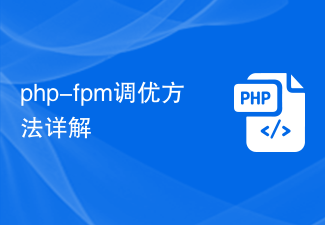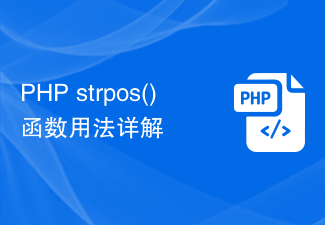The
data() function is used to access data on all elements matched by the current jQueryobject.
The data accessed through the data() function is temporary data. Once the page is refreshed, the previously stored data will no longer exist.
This function belongs to the jQuery object (instance). If you need to remove the data stored through the data() function, please use the removeData() function.
Syntax
The data() function has the following two uses:
Usage 1:
jQueryObject.data([ key [, value ] ])
Access data with the specified key name key. If the value parameter is specified, it means that the data with the value of value is stored in the key name; if the value parameter is not specified, it means that the data previously stored in the key name is read; if no parameters are specified, the previous data is returned in the form of an object. All data stored.
Usage 2:
jQueryObject.data( object )
Pass in any number of key-value data in the form of objects at the same time, each of the object Attribute is the key name, and the attribute value is value.
Note: All "store data" operations of the data() function target each element matched by the current jQuery object; all "read data" operations only target the first matched element.
Parameters
Please find the corresponding parameters according to the parameter names defined in the previous syntax section.
Parameter Description
key Optional/Key name specified by String type String.
value Optional/any type Any type of data that needs to be stored.
object Object classThe specified object is used to encapsulate multiple key-value pairs and store multiple data at the same time.
Return value
data()The return value of the function is of any type. The type of the return value depends on whether the current data() function performs the "store data" operation. Or a "read data" operation.
If the data() function performs a "store data" operation, it returns the current jQuery object itself; if it is a "read data" operation, it returns the read data.
If the current jQuery object matches multiple elements, when reading data, the data() function only uses the first matching element.
If the corresponding data cannot be found when executing the data(key) function (only one parameter key is passed in), undefined will be returned. If the corresponding data is not found when executing the data() function (without any parameters), an empty object (without any attributes) is returned.
Example & Description
Take the following HTML code as an example:
<div id="n1">
<div id="n2">
<ul id="n3">
<li id="n4">item1</li>
<li id="n5">item2</li>
<li id="n6">item3</li>
</ul>
</div>
</div>We write the following jQuery code:
var $li = $("li");
// 同时向所有的li元素存储数据
$li.data("name", "CodePlayer");
$li.data("desc", "专注于编程开发技术分享");
$li.data("url", "http://www.365mini.com/");
var $n5 = $("#n5"); // 通过n4、n5、n6都可以读取数据
// 返回键值name所对应的数据
document.writeln( $n5.data("name") ); // CodePlayer
// 以对象形式返回所有的数据
var obj = $("#n6").data();
for(var i in obj){
document.writeln( i + "=" + obj[i] + "<br>");
}
/*输出:
name=CodePlayer
desc=专注于编程开发技术分享
url=http://www.365mini.com/
*/
//移除掉n4上存储的键名为name的数据
$("#n4").removeData("name");
// 虽然$li匹配3个li元素,但是读取数据只以第一个li元素n4为准,因此返回undefined
document.writeln( $li.data("name") ); // undefined
var object = {
name: "张三",
age: 18,
score: [87, 23, 56],
options: { gender: "男", address: "水帘洞" }
};
// 同时向所有的div元素以对象形式设置多个key-value数据
// value值可以是任意类型的数据,包括数组、对象等
$("div").data( object );
var $n2 = $("#n2"); // 通过n1、n2都可以读取数据
document.writeln( $n2.data("name") ); // 张三
document.writeln( $n2.data("score") ); // 87,23,56
document.writeln( $n2.data("options") ); // [object Object]The above is the detailed content of Detailed explanation of jQuery.data() function usage. For more information, please follow other related articles on the PHP Chinese website!
 C++中的众数函数详解Nov 18, 2023 pm 03:08 PM
C++中的众数函数详解Nov 18, 2023 pm 03:08 PMC++中的众数函数详解在统计学中,众数指的是一组数据中出现次数最多的数值。在C++语言中,我们可以通过编写一个众数函数来找到任意一组数据中的众数。众数函数的实现可以采用多种不同的方法,下面将详细介绍其中两种常用的方法。第一种方法是使用哈希表来统计每个数字出现的次数。首先,我们需要定义一个哈希表,将每个数字作为键,出现次数作为值。然后,对于给定的数据集,我们遍
 C++中的取余函数详解Nov 18, 2023 pm 02:41 PM
C++中的取余函数详解Nov 18, 2023 pm 02:41 PMC++中的取余函数详解在C++中,取余运算符(%)用于计算两个数相除的余数。它是一种二元运算符,其操作数可以是任何整数类型(包括char、short、int、long等),也可以是浮点数类型(如float、double)。取余运算符返回的结果与被除数的符号相同。例如,对于整数的取余运算,我们可以使用以下代码来实现:inta=10;intb=3;
 Vue.nextTick函数用法详解及在异步更新中的应用Jul 26, 2023 am 08:57 AM
Vue.nextTick函数用法详解及在异步更新中的应用Jul 26, 2023 am 08:57 AMVue.nextTick函数用法详解及在异步更新中的应用在Vue开发中,经常会遇到需要进行异步更新数据的情况,比如在修改DOM后需要立即更新数据或者在数据更新后需要立即进行相关操作。而Vue提供的.nextTick函数就是为了解决这类问题而出现的。本文就会详细介绍Vue.nextTick函数的用法,并结合代码示例来说明它在异步更新中的应用。一、Vue.nex
 Django框架中的缓存机制详解Jun 18, 2023 pm 01:14 PM
Django框架中的缓存机制详解Jun 18, 2023 pm 01:14 PM在Web应用程序中,缓存通常是用来优化性能的重要手段。Django作为一款著名的Web框架,自然也提供了完善的缓存机制来帮助开发者进一步提高应用程序的性能。本文将对Django框架中的缓存机制进行详解,包括缓存的使用场景、建议的缓存策略、缓存的实现方式和使用方法等方面。希望对Django开发者或对缓存机制感兴趣的读者有所帮助。一、缓存的使用场景缓存的使用场景
 php-fpm调优方法详解Jul 08, 2023 pm 04:31 PM
php-fpm调优方法详解Jul 08, 2023 pm 04:31 PMPHP-FPM是一种常用的PHP进程管理器,用于提供更好的PHP性能和稳定性。然而,在高负载环境下,PHP-FPM的默认配置可能无法满足需求,因此我们需要对其进行调优。本文将详细介绍PHP-FPM的调优方法,并给出一些代码示例。一、增加进程数默认情况下,PHP-FPM只启动少量的进程来处理请求。在高负载环境下,我们可以通过增加进程数来提高PHP-FPM的并发
 PHP function_exists()函数用法详解Jun 27, 2023 am 10:32 AM
PHP function_exists()函数用法详解Jun 27, 2023 am 10:32 AM在PHP开发中,有时我们需要判断某个函数是否可用,这时我们便可以使用function_exists()函数。本文将详细介绍function_exists()函数的用法。一、什么是function_exists()函数?function_exists()函数是PHP自带的一个内置函数,用于判断某个函数是否被定义。该函数返回一个布尔值,如果函数存在返回True,
 PHP strpos()函数用法详解Jun 27, 2023 am 10:43 AM
PHP strpos()函数用法详解Jun 27, 2023 am 10:43 AMPHPstrpos()函数用法详解在PHP编程中,字符串处理是非常重要的一部分。PHP通过提供一些内置函数来实现字符串处理。其中,strpos()函数就是PHP中最常用的一个字符串函数之一。该函数的目的是在一个指定的字符串中搜索另一个指定字符串的位置,如果包含则返回这个位置,否则返回false。本文将通过详细分析PHPstrpos()函数的用法,助你更好
 Gin框架的模板渲染功能详解Jun 22, 2023 pm 10:37 PM
Gin框架的模板渲染功能详解Jun 22, 2023 pm 10:37 PMGin框架是目前非常流行的Go语言Web框架之一。作为一个轻量级的框架,Gin提供了丰富的功能和灵活的架构,使得它在Web开发领域中备受欢迎。其中一个特别重要的功能是模板渲染。在本文中,我们将介绍Gin框架的模板渲染功能,并深入了解它的实现原理。一、Gin框架的模板渲染功能Gin框架使用了多种模板渲染引擎来构建Web应用程序。目前,它支持以下几种模板引擎:


Hot AI Tools

Undresser.AI Undress
AI-powered app for creating realistic nude photos

AI Clothes Remover
Online AI tool for removing clothes from photos.

Undress AI Tool
Undress images for free

Clothoff.io
AI clothes remover

AI Hentai Generator
Generate AI Hentai for free.

Hot Article

Hot Tools

SublimeText3 Mac version
God-level code editing software (SublimeText3)

SAP NetWeaver Server Adapter for Eclipse
Integrate Eclipse with SAP NetWeaver application server.

Atom editor mac version download
The most popular open source editor

mPDF
mPDF is a PHP library that can generate PDF files from UTF-8 encoded HTML. The original author, Ian Back, wrote mPDF to output PDF files "on the fly" from his website and handle different languages. It is slower than original scripts like HTML2FPDF and produces larger files when using Unicode fonts, but supports CSS styles etc. and has a lot of enhancements. Supports almost all languages, including RTL (Arabic and Hebrew) and CJK (Chinese, Japanese and Korean). Supports nested block-level elements (such as P, DIV),

SecLists
SecLists is the ultimate security tester's companion. It is a collection of various types of lists that are frequently used during security assessments, all in one place. SecLists helps make security testing more efficient and productive by conveniently providing all the lists a security tester might need. List types include usernames, passwords, URLs, fuzzing payloads, sensitive data patterns, web shells, and more. The tester can simply pull this repository onto a new test machine and he will have access to every type of list he needs.






